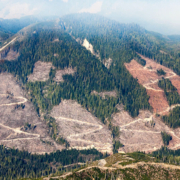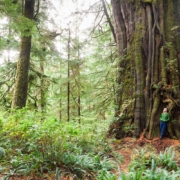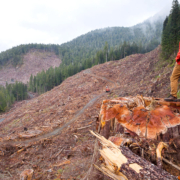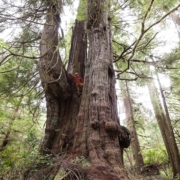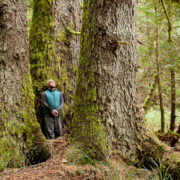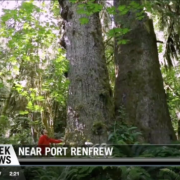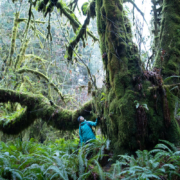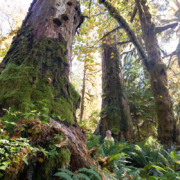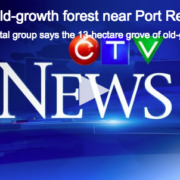The Canadian Press
January 12, 2019
VANCOUVER — Conservationists in British Columbia are pushing for protections on an area of old-growth forests they describe as “Canada’s most magnificent.”
The grove is located on Crown land in the San Juan River Valley near Port Renfrew on southern Vancouver Island in the unceded territory of the Pacheedaht First Nation band.
The 13-hectare grove of immense old-growth Sitka spruce and big-leaf maples draped in hanging mosses and ferns was first located in October and explored again in late December, said Ken Wu, executive director of the Endangered Ecosystems Alliance.
“It is probably the most spectacular and beautiful old growth forest I’ve ever seen and I’ve explored a lot of old growth forests,” Wu said. “(The trees) look shaggy because they’ve got all this hanging mosses and ferns on their branches. So they look like ancient prehistoric creatures.”
Most of the grove is unprotected, with a small portion — about four hectares — off-limits to loggers through the provincial government’s old-growth management area, he said.
Some of the trees in this grove are near-record sized, including a Sitka spruce with a diameter of 3.1 metres that would rank among the top 10 in the province, Wu said.
A massive maple that conservationists have nicknamed the “Woolly Giant” may have the longest horizontal branch of any tree in British Columbia, measuring 23.1 metres, he said.
“It’s covered in thick mats of hanging mosses and ferns, resembling a prehistoric monster.”
Wu said conservationists are calling this area of old-growth forests, “The “Mossome” Grove,” which is short for mossy and awesome.
“It includes lots of the tall, straight Sitka spruce like Roman pillars and they’re very impressive giants along with ancient moss covered shaggy, big-leaf maples,” he said.
It’s hard to say how old these trees are, Wu said.
“These are great growing conditions,” he said. “The trees can be as young as 400 years old but I would estimate around the 800-year-old range for the big spruce.”
Ancient Forest Alliance and other conservation groups are asking the provincial government to save not just this newly found old-growth forest but others too, he said.
This forest can be saved from logging if the provincial government simply extends its existing old growth management area, which currently protects about two hectares of this grove, he said.
The B.C. Ministry of Forests said in a statement that the grove is contained in a woodlot operated by Pacheedaht Forestry Ltd., and there is no imminent logging planned.
“The Ancient Forest Alliance supplied the ministry with an updated map of the grove area yesterday, so ministry staff are currently reviewing the map to determine what protections exist in the area,” it said.
Under the Vancouver Island Land Use Plan, over 13 per cent of Vancouver Island will never be logged, including 520,000 hectares of old growth forests, the statement said.
The ministry is also updating the forest inventory for Vancouver Island and monitoring the effectiveness of best management practices related to protecting legacy, or big trees, it said.
Wu said conservation organizations want comprehensive science-based legislation to protect not just this grove but all old-growth forests.
Old-growth forests are vital to sustaining wildlife, including unique species that can’t live in the second-growth tree plantations that old growth forests are being replaced with, he said.
The Mossome Grove is home to not just some of the oldest and grandest trees but also animals and birds such as Roosevelt elk, black-tailed deer, black bears, wolves, cougars, marbled murrelet, northern goshawk, pygmy owl, screech owl, Vaux’s swift, and long-eared bats.
They are also vital for tourism, providing clean water for communities and wild salmon, for carbon storage, and for many First Nations cultures, Wu said.
“We’ve already lost well over 90 per cent of our grandest old-growth forests in the valley bottoms,” he said.
Read this Canadian Press article in the Globe and Mail, the National Post, or in the Toronto Star.

